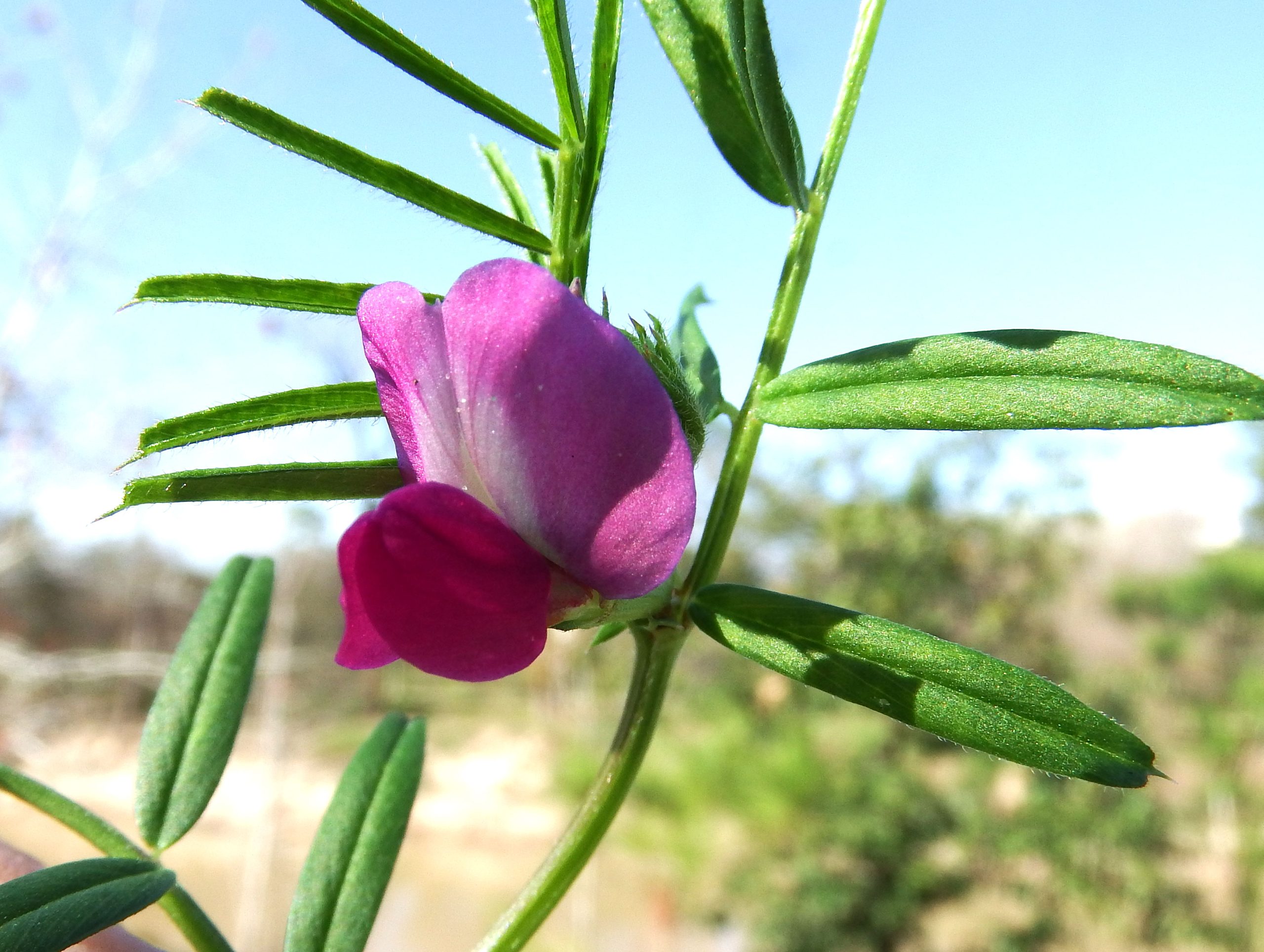Plan B
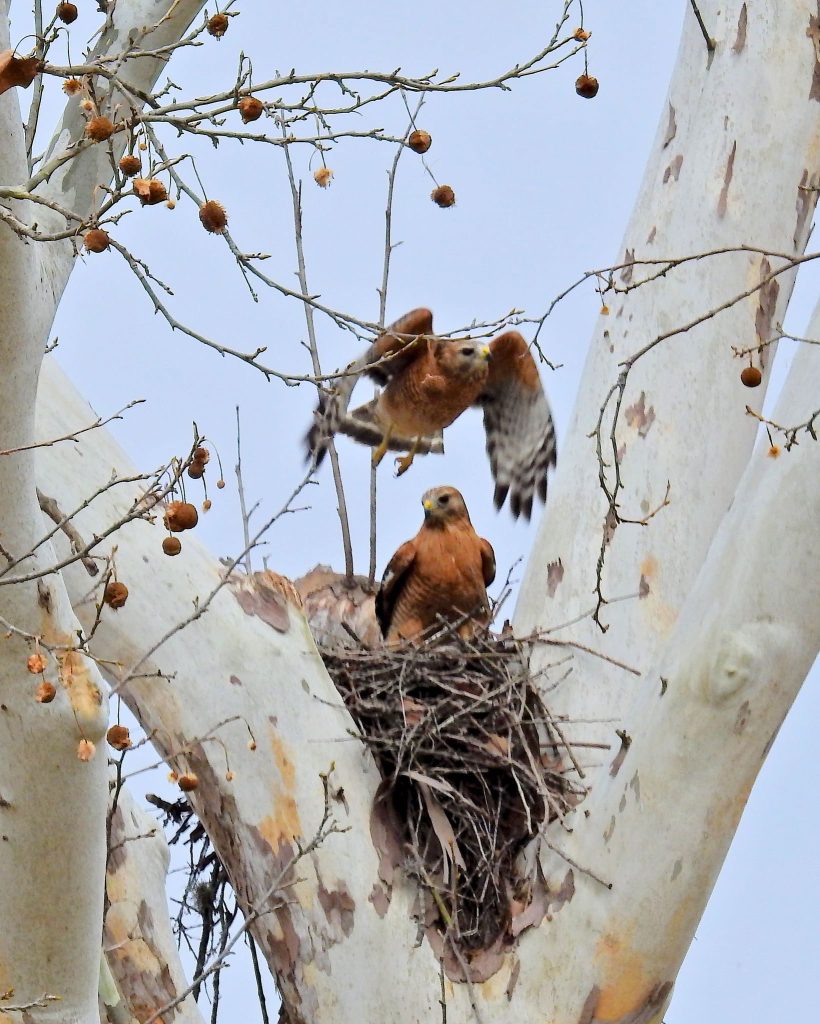
Photo by David Strong
Big shout-out to fellow master naturalist David Strong who noticed two red shouldered hawks tending to their nest in the Park, snapped a great photo (above) and let me know where to find the nest. The plan formed immediately! I would document the nest-building, egg laying, fledgling feeding, first flights. This was going to be the subject of this blog for the next month at least.
Someone forgot to tell the hawks. I have discretely visited the nest every day since David found it and the amount of hawk activity around it has done nothing but diminish. Either they have gotten things arranged and will return once she is ready to lay eggs, or they have abandoned this nest and moved on to another. They mate for life and reuse nests, so there are probably a variety of choices.
It is a little early (egg laying should be mid-February), so there’s still hope that they will make use of the nest David found. That doesn’t help this week’s blog post, however.
The good news is that I took a bunch of photos either walking to the nest, waiting for something to happen, or just generally wandering around near the nest, completely bored by the lack of hawks. None of these photos would really be worth a blog post, but they beat the heck out of 30 plus photos of an empty nest, so welcome to plan B!
The juvenile Great Blue Heron
I almost walked right by this beauty. He was standing on a branch a good six feet above the water at the base of the McGovern Cascade. As big as he is (he stands about four-feet tall), I walked right by him. His juvenile plumage blended in with the surroundings that well.
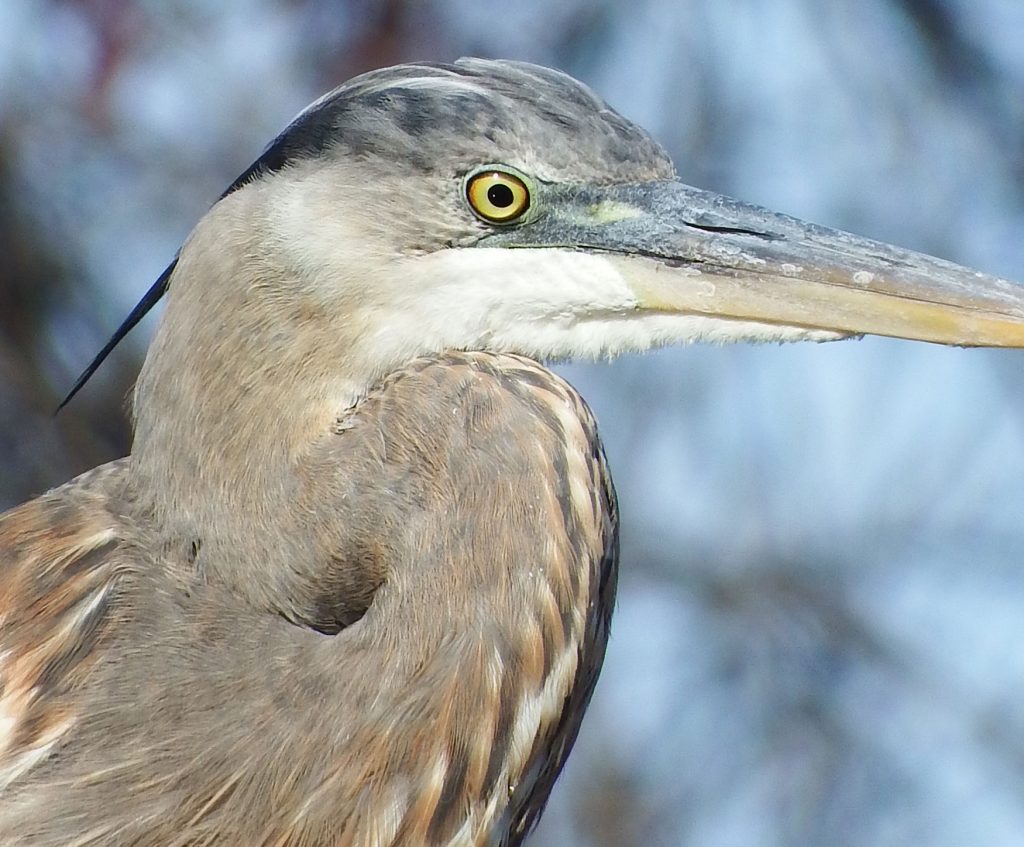
This bird is probably two years old. That’s the age when they start getting their adult plumage. You can see the lovely, long, black feather at the back of his head. This is part of the adult breeding plumage of the great blue heron. This guy is likely to be a new father (or mother) this year. Certainly by next.
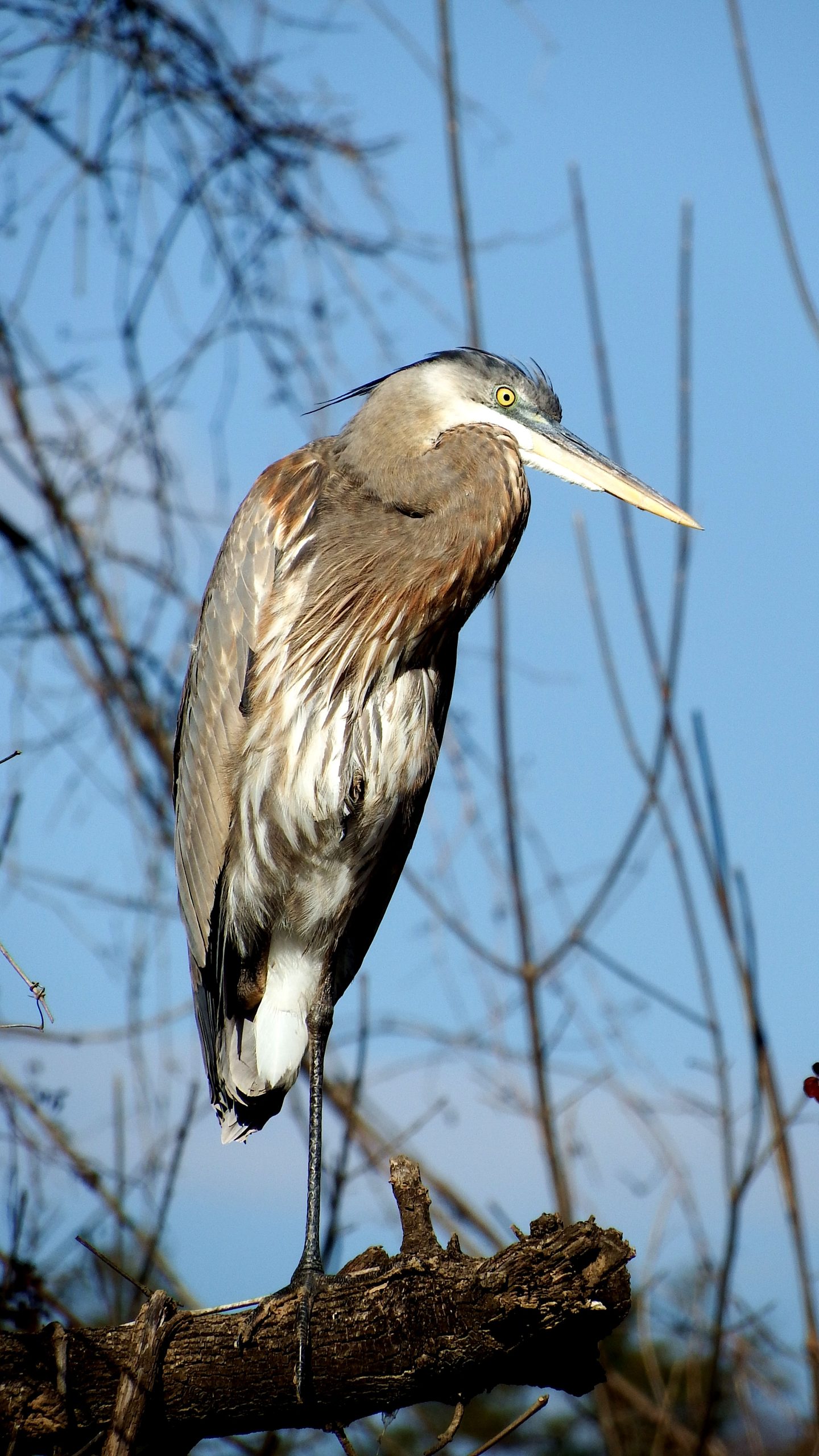
This is an adult great blue heron pretty far into breeding plumage. I ran into him near Glenwood Cemetery two weeks ago.
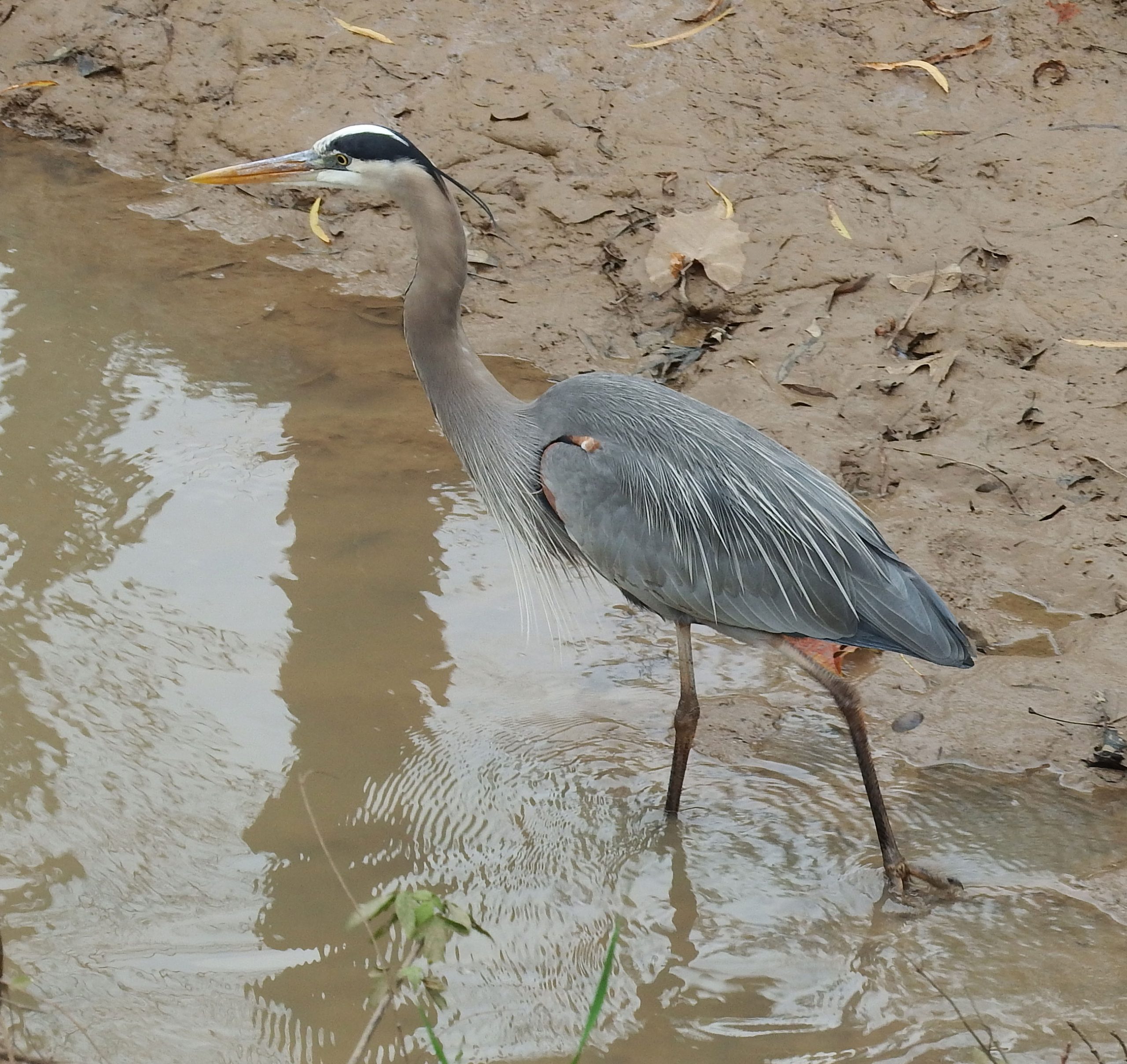
The yellow rumped warbler
I cannot believe I am writing about a yellow-rumped warbler. I have a long-standing beef with this little bird and I am not alone. The problem with yellow-rumped warblers is that they are fairly common and have lots of different looks. Like all warblers, it is a twitchy bird. Warblers eat insects. To catch them, they flit around quickly, so getting a good look at a warbler in a tree can be a challenge. Each glimpse provides a clue as to which warbler it is. Streaking on the sides means it could be any of six or seven interesting birds. The yellow under the wing is also intriguing. Sometimes they flash a wing bar, other times they have a ring around their eye. So many possibilities until it finally flashes that bright yellow butt and your heart sinks; it’s a yellow rump, a butter butt, the bird that makes you look obsessively until you catch a glimpse of that rump and you move on, another victim of the yellow-rumped warbler.
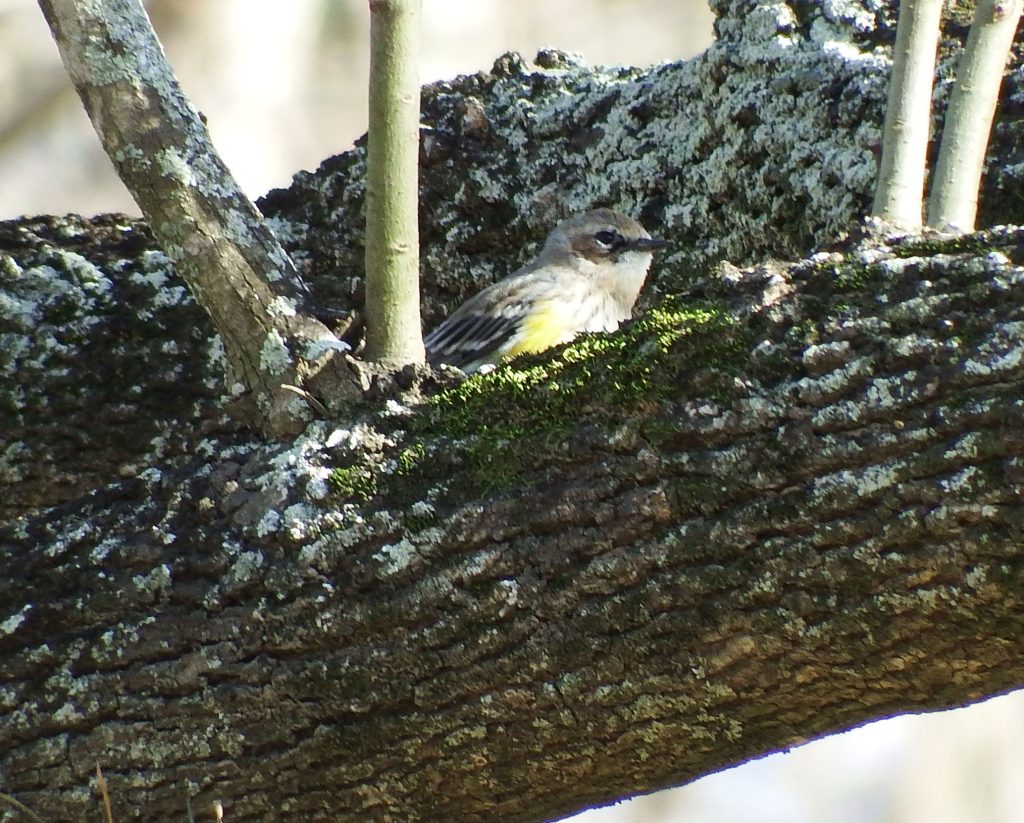
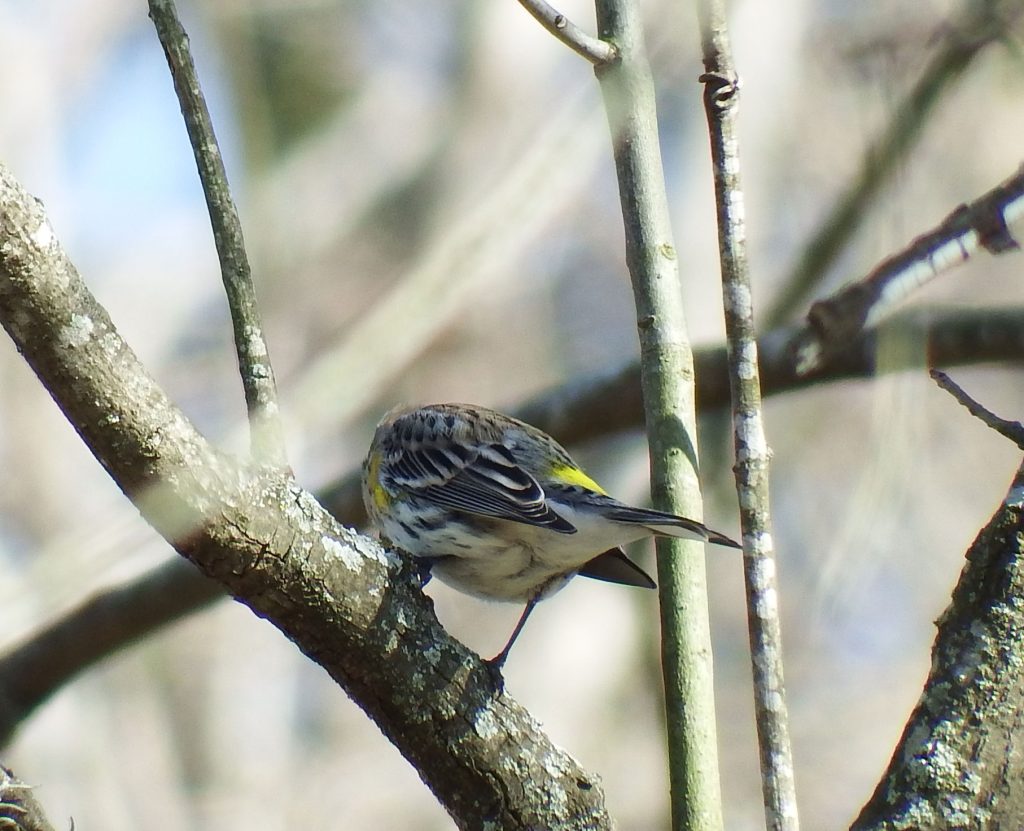
The dreaded yellow rump!
Purple Vetch
This is one of the first flowers of spring. It is a lovely plant with an ugly name: vetch. There are a bunch of vetches, this one is perhaps Louisiana vetch. It is a type of pea and is good for fixing nitrogen in the soil. It is sometimes considered a weed, but it is a decent cover crop and decent fodder. According to the USDAA Fact Sheet “Native Americans used the pods, seeds, and leaves of American vetch as food. A poultice of the leaves has been used to treat spider bites, an infusion of the plant has been used as eyewash and an infusion of the tops has been used as a wash in sweat houses. American vetch has also been used as a panacea, an aphrodisiac, and a good luck charm. Native Americans would get horses to smoke the plant to increase the horses’ endurance.”
The horse endurance thing really intrigues me. Who even thought of that. This is clearly a very compelling little plant, and you can find it everywhere!
